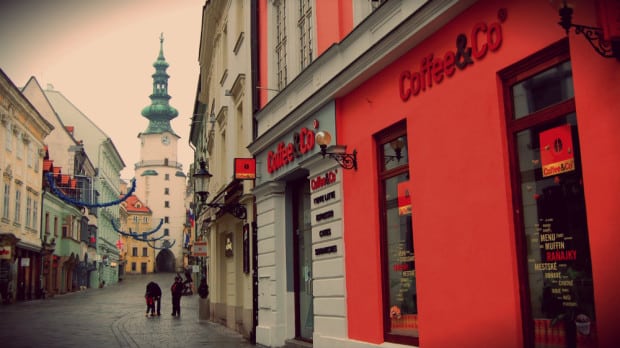
Bratislava is one of those quaint towns that are beautiful without having any unmissable icons or landmarks. It’s a place to wander, to walk around its small cobbled streets and just enjoy the calm beauty of the city.
The capital of Slovakia is the purest example of what a quintessential Central European town should be; compact, navigable and full of charm, Bratislava is a city worth visiting as part of any tour of Central Europe.
Here’s a small list of things to see in Bratislava, a pocket-sized capital city.
Do not miss the post about where to stay in Bratislava, with the best areas and nicest hotels in town.
Bratislava Castle
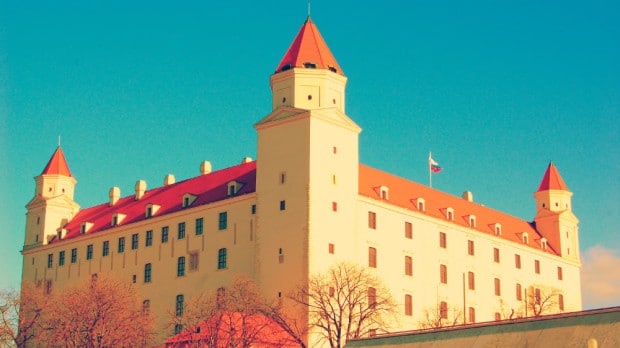
Bratislava Castle dominates the city and the Danube River. It is one of the symbols of Bratislava and Slovakia in general. It was first mentioned in 907.
This fortress was for centuries the place where the monarchs of Austria-Hungary kept the Crown of Saint Stephen and other major Crown Jewels. In 1811 most of the castle was consumed by a raging fire.
The restoration work on the ruins would not be initiated until the 1950s and lasted for over twenty years, in which the ancient castle served as an exhibition center and deposit for the Slovak National Museum.
You can gaze upon breathtaking views of the city and the Danube from the walled citadel of Bratislava Castle.
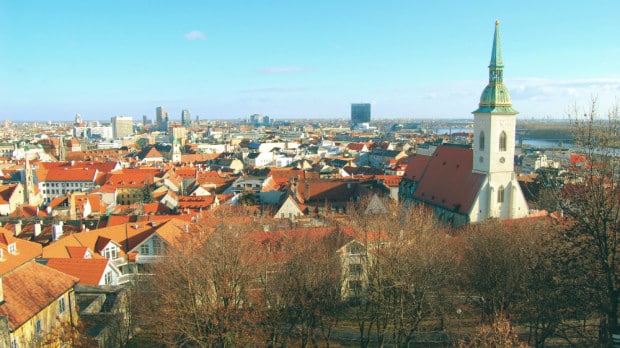
San Martin’s Cathedral
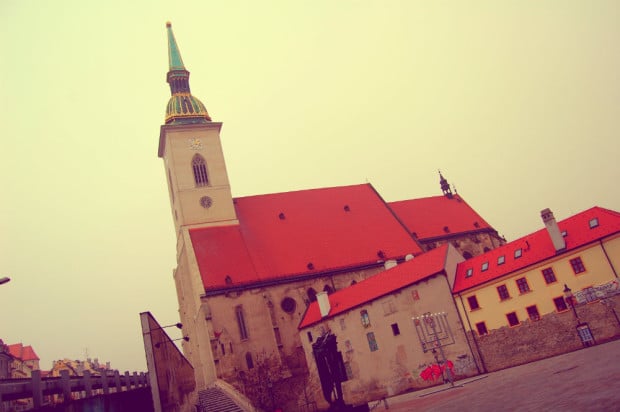
This slender Gothic cathedral is dedicated to St. Martin of Tours, who was born in the ancient Roman province of Sabaria, today Szombathely. In imperial times, the church served as a temple of coronation.
It was here, where 11 Hungarian kings and 8 royal consorts were crowned between 1563 and 1830. Inside, a large covered gold model of the church with the crown of St. Stephen remembers this ancient tradition.
The recently restored church, also displays a statue of St. Martin.
You may also visit the underground crypt where the archbishops of Esztergom are buried and where the rich collections of the Treasure are stored.
Bratislava’s Central Square
Stara radnica is the most central and important square in the historic center of Bratislava.
For centuries, this has been the heart of the capital. Throughout the year, markets, medieval fairs, military parades, plays and all kinds of happy-cheery celebrations are held here, which is a stark contrast when you think about its former function as a place of public executions during the Middle Ages.
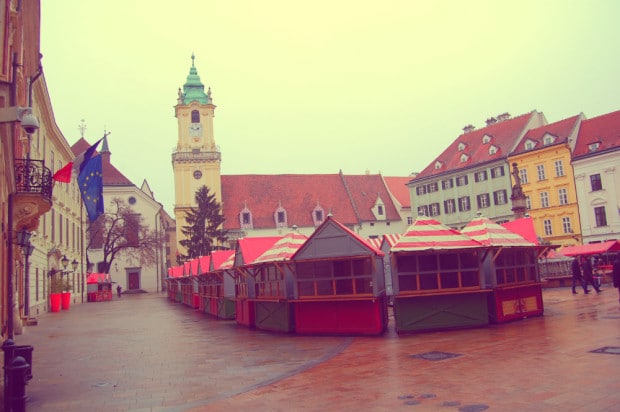
In the center of the square there is the Roland Fountain, a gift from King Maximilian to the city, dating back to 1570.
The most prominent palaces in Bratislava are around this area. The impressive town hall is located at the east end of the square.
Bratislava City Hall
The City Hall of the capital is actually a complex of historic buildings of different age and style.
The architectural ensemble has been gradually developed since the thirteenth century, when the bell tower was Jakob’s (the first mayor of the city of Bratislava) residence.
Over the centuries, the town hall was rebuilt lots of times, most recently just before World War I.
Currently, the complex also serves as headquarters for the Municipal Museum and the City Archives.
Primate’s Palace
The primacy of Esztergom was the head of the Catholic Church in Hungary. As Bratislava was one of the most important cities, with great presence of noble families, the archbishop made it an official residence and built his palace right in the city center. This is, in fact, the biggest house in town.
Michalska Veza (St Michael’s Tower)
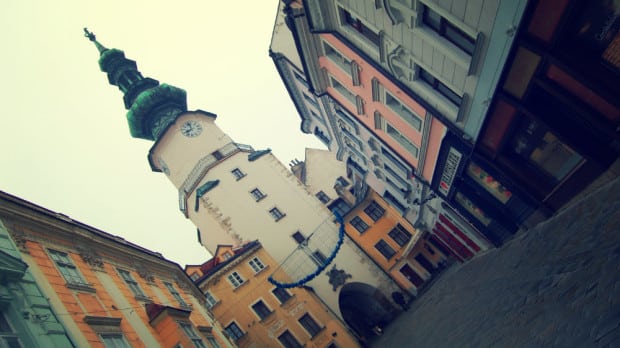
The top of this tower is one of the symbols of the city. The picturesque scene created by this tower and the small bridge on the north side make this one of the most beautiful spots around Bratislava.
It is possible to climb to the top of fourteenth century tower to enjoy the view over the city.
The UFO
The New Bridge was the second bridge built over the Danube in Bratislava. It was erected in the late 1960s, at the height of the communist regime.
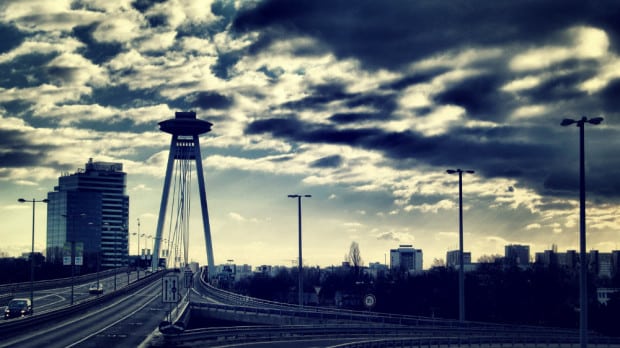
The megalomaniac communist planners decided to destroy almost all of the Jewish quarter of the city in order to create a traffic hub and highway to the very door of San Martin’s Cathedral.
This would forever mark the urban distribution of Bratislava, creating an ugly scar on the face of the nonetheless beautiful city.
While the bridge awakens negative feelings among most inhabitants of the city, it is one of the most pure examples of sixties architecture in Europe.
The main attraction of this bridge is the rooftop restaurant, with views over Bratislava, but also parts of Hungary and Austria.
The Blue Church
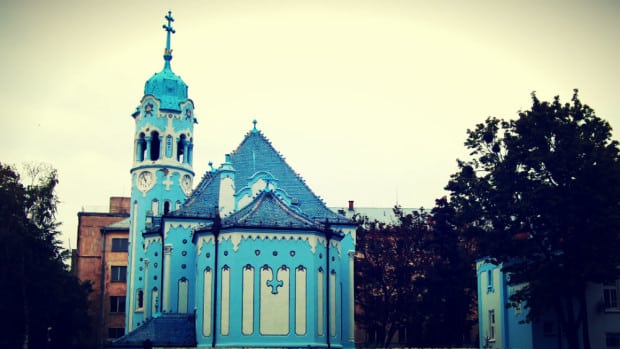
The Blue Church is an extravagant Art Nouveau temple, designed by architect Odon Lechner just before the outbreak of the First World War, when no one could have imagined that the Austro-Hungarian Empire’s days were numbered.
The church is dedicated to St. Elizabeth, and it is one of the most outstanding examples of Hungarian Jungendstil architecture in Europe.
Bratislava Statues
As Bratislava’s last vestiges of the communist era washed away, the city officials made a special effort to bring some color to the up-until-then grey city. Part of that commitment is reflected in the installation of several statues in the historic center of Bratislava.
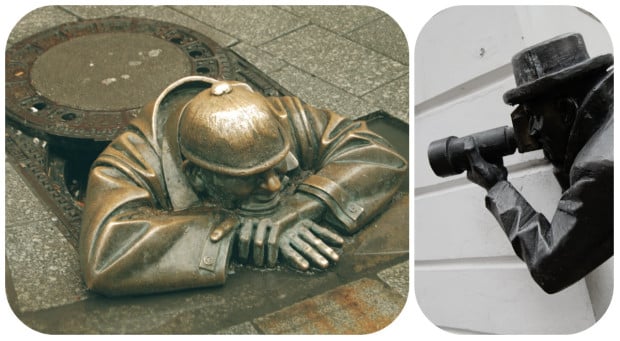
From a sewer cleaner, to a Napoleonic soldier or a paparazzo taking pictures, the old town of Bratislava is like an outdoors museum of lighthearted and fun statues.


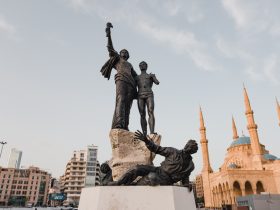
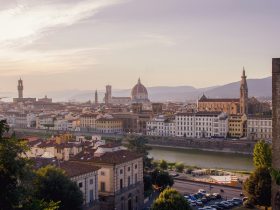
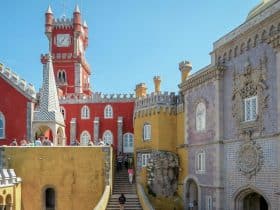
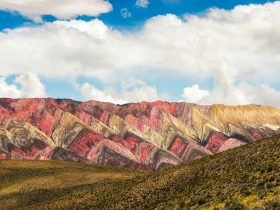
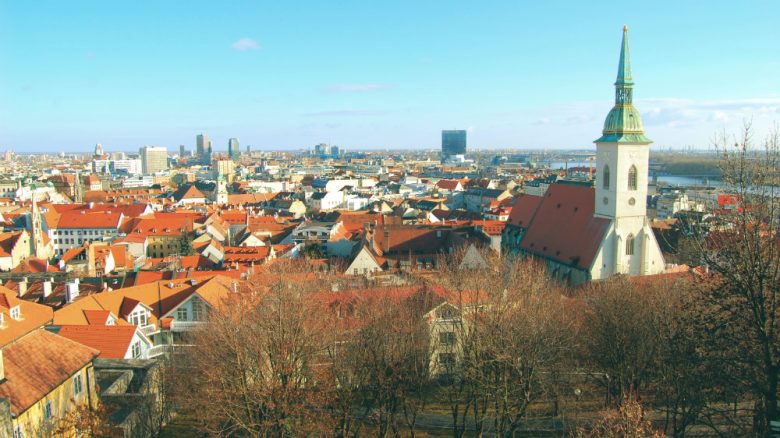
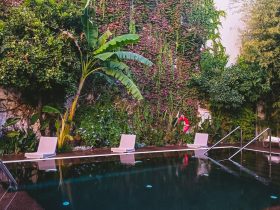
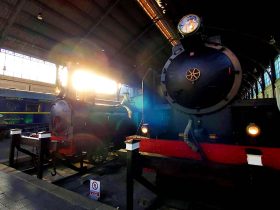
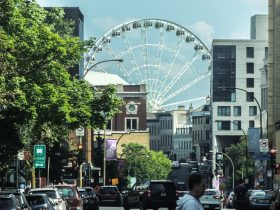
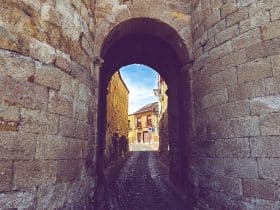










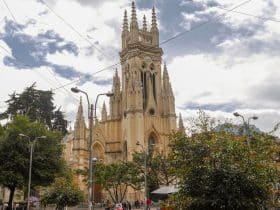
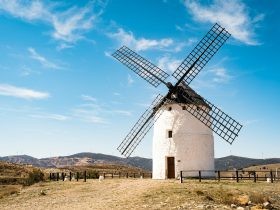
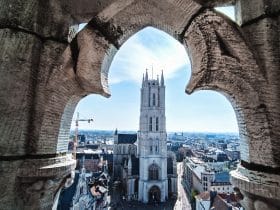

Leave a Reply
View Comments